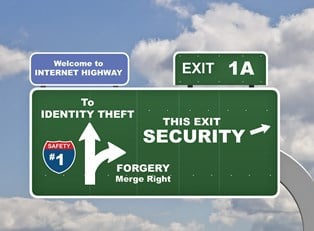American Credit Cards are the Worst in the World
You know those chip cards that everyone's still trying to figure out? Turns out that the entire rest of the world has been using those for decades. And even now that we've moved into the sort-of present, we've kept one of the biggest weaknesses of our credit cards: the magnetic strip. It turns out that you don't need anything fancy or too high-tech to duplicate those. You can buy the equipment to do it for about $25. Out of all of the G20 countries, we're the only one still using the magnetic strip. (G20 is a group of 20 of the top global economies; together they drive 80% of world trade.)
The move from stripes to chips should help prevent large-scale breaches of credit card information. Chip cards carry a cryptographic key that makes it harder for people to steal your information at a card swiper, or by duplicating the magnetic strip. It also generates one-time codes with each transaction instead of giving your card number to the retailer. This should prevent retailers from storing your credit card info in a way that can be stolen.
Unfortunately, though, we still have those weak magnetic strips. And we have signature cards, instead of PIN-only cards, which are more vulnerable to fraud. So we've basically wound up with the worst of the old cards, and the worst of the new. Not to mention that for all their improvements, the chip cards have their own set of weaknesses. The whole thing's a mess, really. The United States accounts for only 24% of the world's credit cards, but a full 47% of the world's credit card fraud. This is the worst country on the planet to use a credit card. We even account for over a third of the U.K.'s credit card fraud. And since the new cards have all the weaknesses of the old ones, that's not likely to change anytime soon.
Did you know...
- Want a money saving tip? Ditch credit and debit cards, and stick to carrying around cash. Studies show people spend between 12 – 18% more when using a plastic card as opposed to when paying for things in cash. If you physically have to dole it out, you’re much more aware that you are spending your hard-earned money!
- Do you know what the lifespan of U.S. currency is? The higher the denomination, the longer it stays in circulation. Both $50 and $100 bills last 9 years. The $20 sticks around for 4 years. $10 bills circulate for 3 years. The $5 bill has a 2-year lifespan, and the $1 bill only lasts around 18 months before being retired. Coins last around 30 years.
- When it comes to counterfeiters, North Korea are pros. They have gotten so good at counterfeiting American currency (particularly the $50 and $100 bills) they their fakes are known as "superdollars." They require specialized Federal Reserve equipment to be identified. There are $45 million worth of North Korean fakes…that we know of.
- The most expensive hotel room in the world (the Royal Penthouse Suite at the Hotel President Wilson in Geneva, Switzerland) costs $83,200 a night. That's $58 per minute for a stay! Good thing it has 12 bedrooms, 12 baths, a wraparound terrace, a Steinway piano, and an assigned private staff (including a chef)!
- Have you ever wondered who prints the most money? That would be Hasbro, as in the makers of Monopoly. Hasbro prints more Monopoly money in a given year than there is money in the entire world. Each set of the game comes with $20,580. Bet you didn’t know you had that much money lying around the house!




